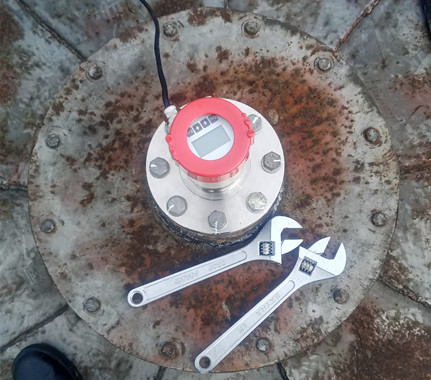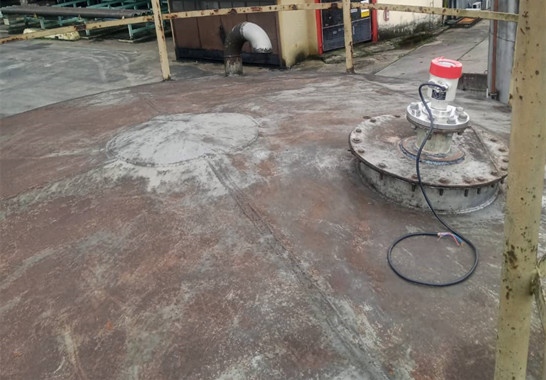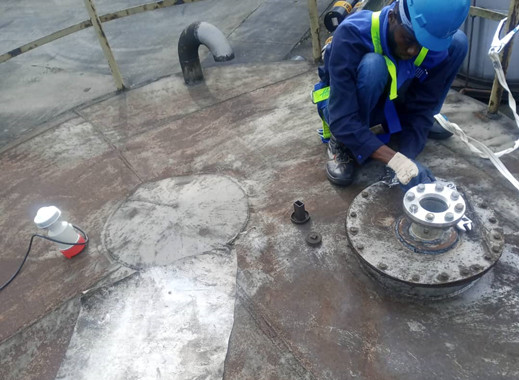Understanding Storage Tanks Types: Helpful for Selecting Right Level Sensors
Storage tanks are used to store refined chemical substances such as acids, alkalis, alcohols, gases, and liquids. Due to the stored substances, storage tanks come in various forms.
Classified by location
Above-ground tanks, underground tanks, semi-underground tanks, offshore tanks, subsea tanks, etc.
Classified by form
Vertical tanks, horizontal tanks, etc.
Classified by structure
Fixed roof tanks, floating roof tanks, spherical tanks, etc.
Classified by size
Tanks with a capacity of over 100m³ are large tanks, mostly vertical; tanks with a capacity of below 100m³ are small tanks, mostly horizontal.

Classified by materials
Polyethylene tanks, polypropylene tanks, fiberglass tanks, ceramic tanks, rubber tanks, stainless steel tanks, etc.
According to the materials, they can store different liquids.
Polyethylene(PE) Type
Polyethylene(PE) storage tanks have advantages such as no weld seams & leak, impact & corrosion resistance, non-toxicity, anti-aging, long life, and compliance with hygiene standards. It’s interior lining is smooth, even, and sturdy and ideal for storing corrosive liquids.
PE tanks can store substances as follows:
(1)Inorganic Acids: Dilute sulfuric acid, dilute nitric acid, hydrochloric acid, phosphoric acid, hydrofluoric acid, hydrobromic acid, hypochlorous acid, silicic acid, nitrous acid, sulfurous acid, carbonic acid, fluosilicic acid, fluoroboric acid, etc.
(2)Organic Acids: Formic acid, acetic acid, propionic acid, butenoic acid, lauric acid, fatty acids, lactic acid, ethanoic acid, acetoacetic acid, oxalic acid, malonic acid, succinic acid, maleic acid, malic acid, tartaric acid, benzoic acid, phenylacetic acid, etc.
(3)Alkalis and Hydroxides: Sodium hydroxide, potassium hydroxide, ammonia, calcium hydroxide, magnesium hydroxide, barium hydroxide, aluminum hydroxide, iron hydroxide, ammonium sulfate, ammonium nitrate, ammonium carbonate, ammonium phosphate, ammonium persulfate, ammonium chloride, sodium silicate, potassium hypochlorite, aluminum carbonate, aluminum nitrate, aluminum sulfate, potassium acetate, potassium formate, potassium, copper sulfate, copper nitrate, alum, calcium carbonate…
(4)Elements, Gases, and Other Inorganic Compounds(Sulfur, sulfur colloid, phosphorus, mercury, hydrogen peroxide, ammonia, coal element, carbon monoxide, carbon dioxide, sulfur dioxide, hydrogen chloride, hydrogen bromide, hydrogen sulfide, phosphine, boron fluoride, calcium oxide, zinc oxide…)
(5)Alcohols, Aldehydes, Ketones, Ethers, Esters, Hydrocarbons, and Petroleum Products (Methanol, ethanol, n-propanol, isopropanol, isobutanol, butanol, sec-butanol, tert-butanol, ethyl alcohol, isopropyl alcohol, formaldehyde, acetaldehyde, butyraldehyde, asphalt…)
(6)Other Elemental Compounds, Industrial Liquids and Products, Food and Vegetable Oils, Atmospheric, Water, Soil (Soap, detergents, lime, bleach, ink, latex, starch, gelatin, animal oil, rosin, nicotine, vinegar, yeast, wine, seawater, saline, high-purity water, acidic mine water, sewage, soil…)
(7) Halogenated Organic Compounds, Amines, Phenols, and Other Organic Compounds (Chloropropanol, chloramine, hexachlorobenzene, freon, dimethylformamide, pyrocatechol, resorcinol, sodium phenolate, morpholine, nicotine…)
Fiberglass Type
Fiberglass tanks have characteristics of being lightweight, high-strength, good corrosion resistance, electrical properties, thermal performance, and design flexibility.
Fiberglass tanks can store the same substances as polyethylene tanks.

Stainless Steel Type
Stainless steel tanks have strong corrosion resistance and are not corroded by external air and residual chlorine in water. Each tank undergoes super-strong pressure testing, with a service life of more than 100 years at atmospheric pressure.
They have good sealing performance that prevents harmful substances and insects from entering the tank, and ensures water quality is not contaminated by external pollutants and preventing the growth of red insects.
Stainless steel tanks are commonly used to storage food, beverage, wines, medicine and so on.
PP Type
PP storage tanks store a wide range of materials, including chemicals, acids, bases, and more. They feature exceptional chemical and corrosion resistance, lightweight construction, durability, low maintenance, and suitability for wide temperature ranges. These tanks have smooth, non-porous surfaces for easy cleaning.
20R Type
20R belongs to a large category of container plates in the steel industry. It is mainly used to make reactors in various industries such as industrial, large factory boilers, power stations, etc. The most common oil tanks and liquefied gas tanks in life are made of it.
Conclusion
Understanding the storage tanks can be helpful when choosing a level sensor. When it’s challenging to determine the properties of the medium, we can refer to the material of the storage tank to select the most suitable level sensor.

Previous Posts





